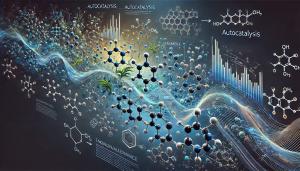
Assembly Theory’s Life-Defining Threshold Found to Be Fundamentally Flawed Again
A Second New Paper Shows How Assembly Theory Fails to Define Life’s Complexity and Cannot Be Easily Fixed
Initially hailed as a tool to characterize the complexity of living systems, particularly molecules associated to life, AT has been positioned by its proponents as a "theory of everything," capable of unifying physics and biology, explaining selection, evolution, life, matter, and even time. However, new findings further undermine its claims, particularly the validity of the "assembly index" as a metric to distinguish living from non-living systems.
The new paper published by the journal Entropy, where some of the AT authors have published their first results, challenge Assembly Theory’s central assumptions joining at least half a dozen papers refuting Assembly Theory in journals ranging from Nature to PLOS to the Royal Society. The first paper to debunk the threshold claims was published early this year and was led by planetary scientists from NASA and other institutions. Published in a journal of the Royal Society, revealed critical flaws in the theory’s approach to defining life by exhibiting instances of high assembly value but definitely not alive. The authors of AT response was to suggest that molecules need some pre-filtering to pick those suitable on Earth. While this answer was confusing, the suggestion seems to go against AT's authors own arguments claiming that the assembly index was an agnostic measure able to characterize life in the universe.
Environmental Bias Undermines Assembly Index
The Entropy paper introduces a simple model to explore how objects of varying complexity form under the influence of autocatalysis, a natural chemical process where reactions self-sustain and accelerate. The study shows that in environments with low probabilities of catalysis, reaction networks favor longer, sequential pathways, while environments with high catalysis probabilities favor shorter, parallel reaction chains. This finding directly challenges the notion that the assembly index reliably reflects an object’s intrinsic complexity.
"By focusing solely on the final complexity of an object without accounting for environmental conditions, the assembly index provides a distorted view of how complex objects form." The study concludes that the shortest or longest assembly pathway for a given object might never occur in certain environments. This environmental dependency introduces a critical flaw in AT’s claims to universally characterize life or complexity based on the assembly index.
Implications for Life-Detection Metrics
AT’s most ambitious claim has been its ability to define a threshold for life based on the assembly index. However, the Entropy study demonstrates that such a threshold is inherently unreliable. The complexity of molecular structures, central to AT’s argument, cannot be meaningfully separated from the environmental conditions in which they form. Consequently, any attempt to define life using AT’s one-dimensional, integer-based metric risks oversimplification and error.
This may shake the foundations of the rest of Assembly Theory given that this alleged property to separate living from non-living systems was deemed to be its cornerstone from which everything else followed. However, it was also shown that such separation was already possible with traditional compression algorithms in a paper published in the peer-reviewed journal Parallel Processing Letters in 2018 by Oxford and Cambridge researchers which none of the papers of Assembly Theory acknowledges.
Assembly Theory’s Core Metric Reduced to Existing Tools
Adding to the criticism, the study reaffirms prior findings that the assembly index is mathematically equivalent to Shannon entropy and popular compression algorithms. This equivalence undermined AT’s claim of novelty, suggesting that its insights could have been framed entirely in terms of existing methods without introducing the assembly index or a whole new framework with an entire new vocabulary.
A Growing Case Against Assembly Theory
This new study adds to the growing body of evidence that Assembly Theory oversimplifies life’s complexity while ignoring critical environmental factors key in any discussion of selection and evolution. Despite being framed as a revolutionary unification of biology, physics, and chemistry, AT increasingly appears to be a rebranding of well-known concepts dressed in new terminology.
By failing to account for the conditions in which complex molecules form, AT risks drawing misleading conclusions about life’s origins and fundamental nature. Its purported life-detection threshold, based on a flawed metric, seems to collapse under scrutiny in multiple independent studies. The scientific community is calling for more rigorous examination of its claims, particularly given the sweeping statements made by its authors in both academic and public domains.
Conclusion
Assembly Theory’s oversights in environmental context and reliance on existing mathematical tools significantly weaken its credibility as a framework for understanding life and complexity. As evidence mounts against its foundational assumptions, researchers are cautioning against the continued promotion of AT as a groundbreaking theory. Instead, this new paper suggests to focus on better founded, multi-dimensional approaches that reflect the intricacies of living systems and their environments.
PR Team
OxfordIA
email us here
Distribution channels: Book Publishing Industry, Chemical Industry, Education, IT Industry, Science
Legal Disclaimer:
EIN Presswire provides this news content "as is" without warranty of any kind. We do not accept any responsibility or liability for the accuracy, content, images, videos, licenses, completeness, legality, or reliability of the information contained in this article. If you have any complaints or copyright issues related to this article, kindly contact the author above.
Submit your press release
